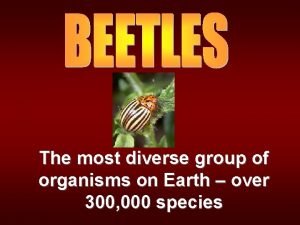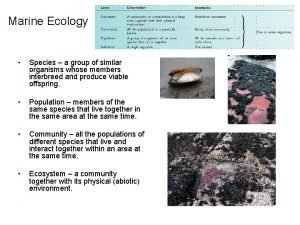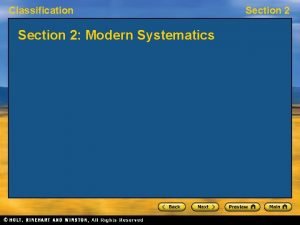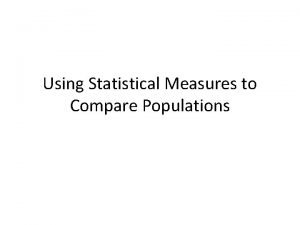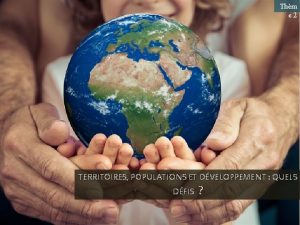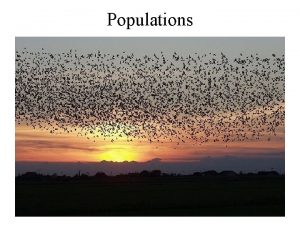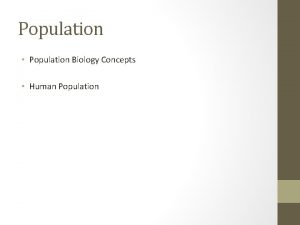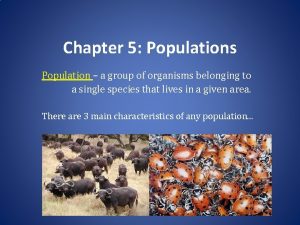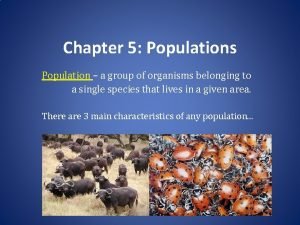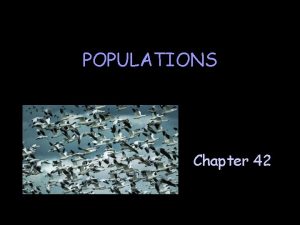Populations A population is a group of organisms










- Slides: 10

Populations A population is a group of organisms of the same species that inhabit a specific geographic area.

Populations The rate at which a population grows can be calculated. Four factors that are part of the growth rate equation are births, deaths, immigration, and emmigration.

Populations Rate of Population Growth Equation Rate = (# of Births + # of Immigrants) – (# of Deaths + # of Emmigrants) Extremely fast growth in a population is called a Population Explosion. Reasons for a population explosion are… 1. 2. 3. New species introduced to an environment with few predators. Plentiful food supply. Abundant space.

Populations An Alien Species is the term for the introduction of a foreign species to a new environment. Two examples in the Great Lakes were the introduction of Zebra Mussels and Asian Carp.

Populations When a greater number of species leave a population compared to the number of species entering the population, this is called population extinction.

Populations Biotic Potential is the maximum amount of offspring that can be reproduced in a given time frame. It is the maximum number of offspring that a species could produce if resources were unlimited. For example, human females could theoretically produce 1 child every 9 months between the ages of approximately 12 and 45.

Populations Organisms do not usually reproduce according to their biotic potential. The maximum number of organisms that an environment can support is called its carrying capacity.

Populations There are 2 main types of limiting factors affecting the rate at which populations can grow. These are density dependent factors or density independent factors.

Populations Density Independent 1. Hurricanes 2. Floods

Populations Density Dependent 1. 2. Disease (The Plague, Avian Flu) Predation
 Why do organisms interact with other organisms
Why do organisms interact with other organisms Multicellular organisms and unicellular organisms
Multicellular organisms and unicellular organisms Chapter 4 section 1 population dynamics answer key
Chapter 4 section 1 population dynamics answer key Population ecology section 1 population dynamics
Population ecology section 1 population dynamics Population ecology section 1 population dynamics
Population ecology section 1 population dynamics Chapter 4 population ecology section 1 population dynamics
Chapter 4 population ecology section 1 population dynamics Most diverse group of organisms
Most diverse group of organisms Marine ecology
Marine ecology Modern systematics try to group organisms based on
Modern systematics try to group organisms based on Using statistical measures to compare populations
Using statistical measures to compare populations Territoires populations et développement quels défis
Territoires populations et développement quels défis






